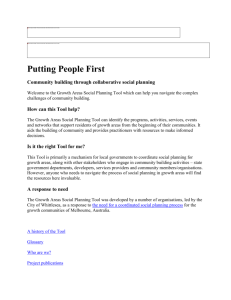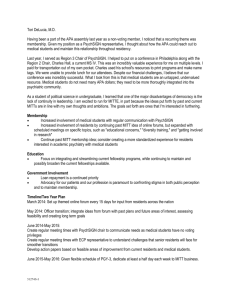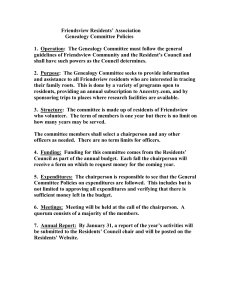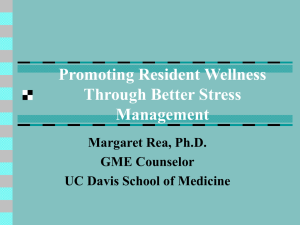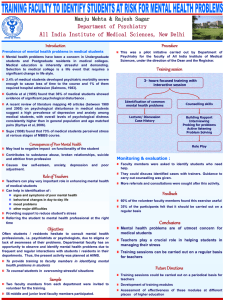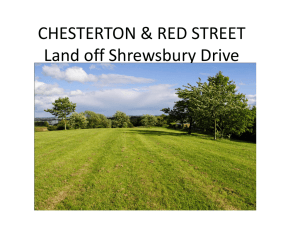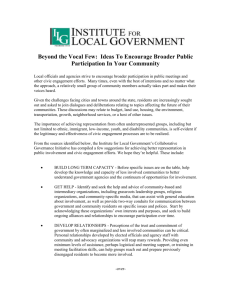Social Infrastructure Planning Tool Project
advertisement
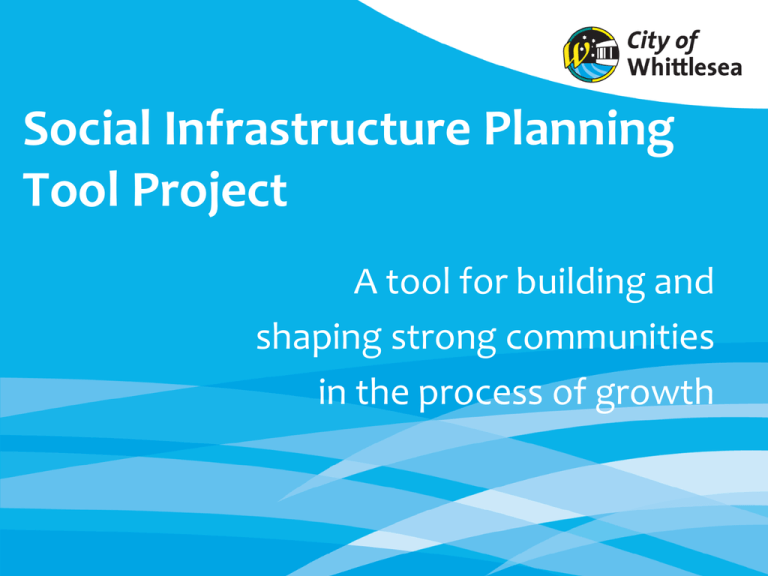
Social Infrastructure Planning Tool Project A tool for building and shaping strong communities in the process of growth Council 2011 2031 % change Casey 261, 196 404,498 54.9 Cardinia 77,535 142,383 83.6 Hume 175,605 263,998 50.3 Melton 112,980 225,774 99.8 Mitchell 35,995 59,266 64.7 Whittlesea 163,538 287,566 75.8 Wyndham 168,550 340,724 102.1 995,399 1,724,211 73.2 Total Social Infrastructure Defined Those processes, programs, events, services, networks and activities that support individuals and families to meet their social and personal needs in a particular place through personal growth, social interaction, social services support and community development. Two key elements 1. Community connecting activities, programs, events 2. Community capacity-building programs, activities, processes Importance of Networks Personal bonding networks •family, close friends Broader bridging networks •education, employment, clubs, volunteering Governance networks •links to decision-making bodies (Pope 2011 DPCD) Social Isolation in the Growth Areas •Residents of growth areas tend to move (far) away from their bonding, bridging and familiar governance networks •Lack of adequate public transport and high fuel costs make travel difficult Social isolation amongst growth area residents is resulting in higher than average rates of • • • • mental health problems child developmental issues family dysfunction/violence Youth disengagement Where social connection is lacking: •lifeless places to live where residents suffered from a range of mental health vulnerabilities (UK New Towns) Where social connection present: •have a 50 per cent greater likelihood of survival compared with those with poor or insufficient social relationships. (VicHealth) New Town Blues “There is a strong link between mental ill health and lack of social ties in a new environment.” Goh and Bailey (2007) SIPT Project To develop a strengths-based, flexible Tool to guide the building of strong connected communities by identifying for all stakeholders •what social infrastructure is necessary •when and how it should be delivered •and by whom. Key stakeholder involvement • Australian Community Foundation • 7 Melbourne Growth Councils • Department of Planning and Community Development • Department of Human Services • Stockland Land Developer • Brotherhood of St Laurence • VCOSS • Department of Health • Lend Lease/Delfin • Melbourne Citymission • National Growth Area Alliance • RMIT Centre for Design • Scouts • VicHealth and GAA Literature Review Recommendations • Establish a benchmark standard for funding community development and community support services • Develop Good Practice Guide • Develop a model planning framework Principles of Planning for Social Infrastructure •Community engagement •Asset-based •Flexible •Inclusive •Prevention focus •Early delivery •Partnership approach •Innovation •Sustainable •Continuous Evaluation Victorian Community Wellbeing Framework •Healthy, safe, inclusive •Culturally rich and vibrant •Democratic with active citizens Stage Three (Capire Consulting) • To recommend a Governance Structure for the Project. • To develop a Framework for Social Infrastructure Planning in Growth Areas • To develop a Tool that will identify a benchmark standard for community development and community support program provision for the Growth Areas in the process of growth • An Implementation Plan that will include identifying stakeholder responsibility and possible funding sources (where available) • An Evaluation Plan Stage Four Demonstration Project (2014): •the Tool will be applied to a new estate (or estates) and evaluated Community Engagement Community Festivals Music for young people Community residents associations Connection through Social Media Street parties/Neighbourhood BBQs Book clubs, choirs, sewing groups, writers’ groups.... Active Recreation Programs Playgroups Cooking programs for young people Financial Literacy Building Harmony Parenting Programs Placemaking New Zealand “What attracts people most, it appears, is other people” Thank you Joanne Kyrkilis Social Policy and Projects City of Whittlesea On behalf of the 7 Growth Councils and the SIPT Reference Group
